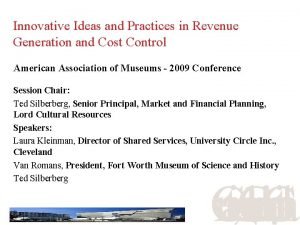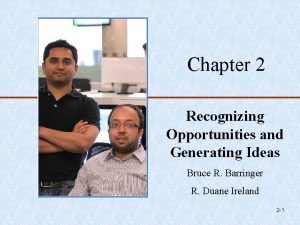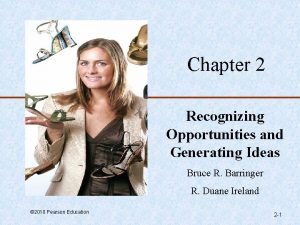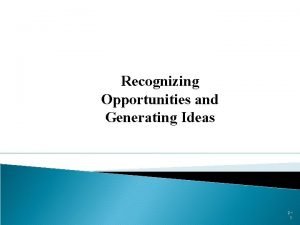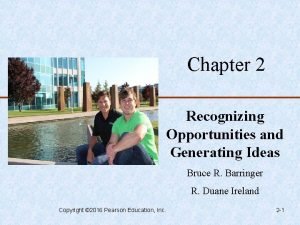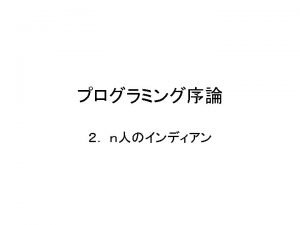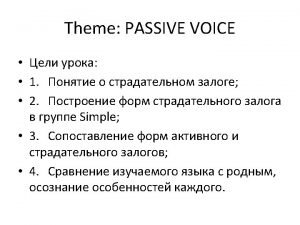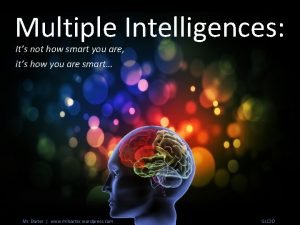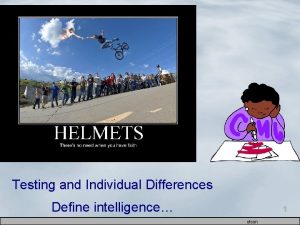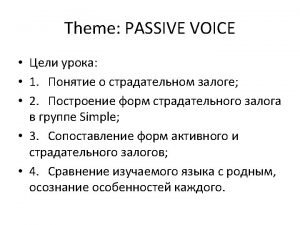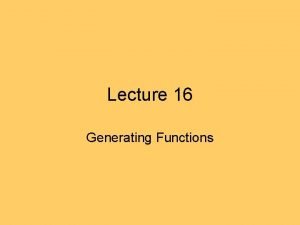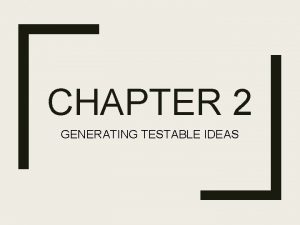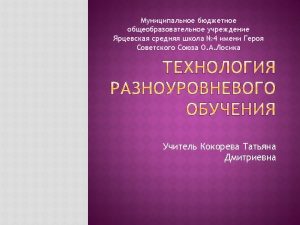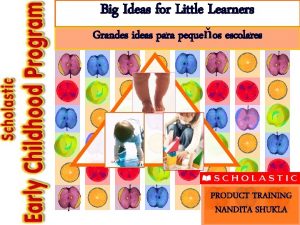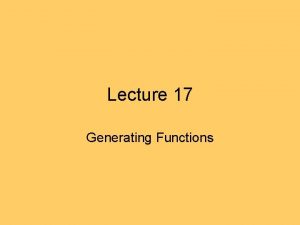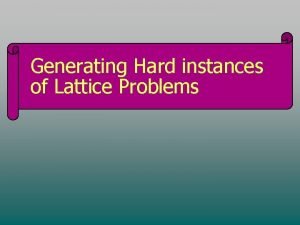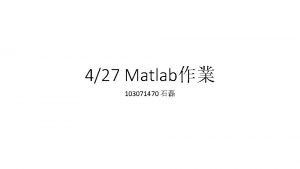Generating Ideas with the Method of Smart Little















- Slides: 15

Generating Ideas with the Method of Smart Little People (SLP) Iouri Belski and Victor Berdonosov Image: flickr. com

This teaching resource has been provided by the Fellowship web repository (www. edisons 21. com) which has been developed by a team of TRIZ academic experts under the supervision of Professor Iouri Belski from the Royal Melbourne Institute of Technology (RMIT). Materials offered by this repository are intended for usage by university academics and students and are offered under the Creative Commons Licence. Fellowship activities have been supported by the Australian Government Department of Education and Training. 3

Theory of Inventive Problem Solving (TRIZ): A generic name for a set of heuristics (tools) for problem analysis, problem reframing, failure analysis and creative problem solving that was conceived in Russia in the 1950 s Grounded in an analysis of thousands of patents that revealed important trends of development of artefacts The original six tools of ‘classical TRIZ’, were developed (by the mid 1980 s) specifically for engineering design practice Today, TRIZ comprises over 20 tools (including software) that varies from weak to strong heuristics TRIZ tools are widely used by engineers at multinational corporations like Intel, GE, Philips, Siemens, Bosch, Boeing, Samsung, LG, Cochlear… TRIZ tools have been taught at numerous universities worldwide 4

Method of Smart Little People (SLP) 1. Model the system under improvement by representing it with SLP 2. Think of modifying the system by: 2. 1 Changing behaviours of the existing SLP 2. 2 Adding/removing SLP with appropriate behaviours 2. 3 Modifying the system itself and using SLP with special behaviours To develop ideas for system improvement, redraw the system as many times as required by applying changes to SLP behaviours. 3. Think of a practical realisation of these solution ideas. Sketch them. Decide on the most appropriate idea for implementation.

Magnetic Charged Partly flexible Fully flexible Inflexible ‘Behavioural’ Types of SLP Hot Inflexible – they are stationary and do not move Partly flexible – they can move but not always freely Fully flexible – they are entirely free and can move anywhere and at any time (as required) SLP can possess any required property (behaviour): it can be magnetic, electric, sticky, hot or cold, can jump, shrink and grow, accumulate energy, eliminate friction etc.

The Method of Smart Little People Video Please demonstrate the Smart Little People Heuristic video from the www. edisons 21. com web repository

Problem to Consider Please add the problem that suits your students

Step 1: Modeling the Situation

Step 2. 1: Changing the SLP Behaviour

Step 3: Possible Solution

Step 2. 2: Adding/Removing SLP

Step 3: Possible Solution

Step 2. 3: Modifying the System

Step 3: Possible Solution

SLP Heuristic 1. Model the system under improvement with SLP 2. Think of modifying the system by: 2. 1 Changing SLP behaviours 2. 2 Adding/removing SLP 2. 3 Modifying the system itself Redraw the system to develop ideas to improve the system. 3. Think of a practical realisation of these solution ideas. Sketch them. Decide on the most appropriate ideas for implementation. Visit www. edisons 21. com to learn more thinking heuristics
 Innovative ideas for revenue generation
Innovative ideas for revenue generation Observing trends in entrepreneurship example
Observing trends in entrepreneurship example An opportunity has four essential qualities it is
An opportunity has four essential qualities it is Recognising opportunities
Recognising opportunities Recognizing opportunities and generating ideas
Recognizing opportunities and generating ideas 1 little 2 little 3 little indians
1 little 2 little 3 little indians 1 little 2 little 3 little indian
1 little 2 little 3 little indian Book smarts definition
Book smarts definition Smart two men are
Smart two men are It's not how smart you are it's how you are smart
It's not how smart you are it's how you are smart Everfi future smart smart shopping answers
Everfi future smart smart shopping answers It's not how smart you are
It's not how smart you are Gestalt
Gestalt Street smart vs book smart quotes
Street smart vs book smart quotes One smart man he felt smart
One smart man he felt smart Ideas have consequences bad ideas have victims
Ideas have consequences bad ideas have victims
